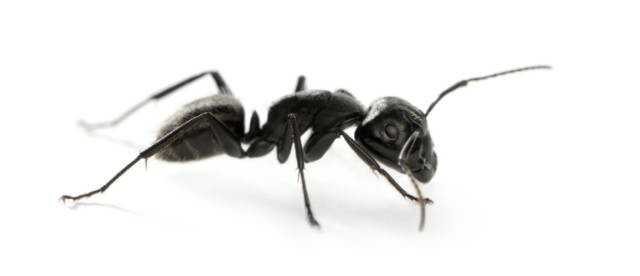People often mistake carpenter ants for termites, but they are not like most small bugs. Large and strong, these insects can do a lot of damage to wood buildings. To get rid of them quickly, you must be able to correctly identify them. In this piece, we’ll talk about what makes carpenter ants different from other kinds of ants so you can spot them and tell them apart.
Size and colour: Carpenter ants are bigger than most other kinds of ants. Most of the time, they’re between 6 and 13 mm long. Their size alone can help you tell them apart from smaller types of ants. Carpenter ants can be any colour, but most of the time they are black, dark brown, or red. Some kinds of carpenter ants may have a mix of these colours, which makes them interesting to look at.
Body Parts: A carpenter ant’s body is made up of three clear parts: the head, the thorax, and the belly. Their jaws, or mandibles, are big and strong, and they use them to cut through wood. The thorax is a round part of the body that joins the head to the abdomen. The abdomen is longer and generally darker than the rest of the body.
Antennae: Carpenter ants have antennae that are bent or elbowed, which is one thing that makes them stand out. These antennae are very important to their sense of touch and help them find their way around and talk to other ants using chemical messages.
Winged Reproductive Ants (Swarmers): Carpenter ants make “swarmers,” which are winged reproductive ants, at certain times of the year. These swarmers are the females of the colony. They look different from the worker ants and are in charge of making babies. They have two sets of wings and are bigger than worker ants. The appearance of swarmers is a good sign that a carpenter ant colony is already there.
5. Thoracic Profile: The thoracic profile is another way to tell carpenter ants from termites. Carpenter ants have a waistline that is more defined, giving them a segmented look. Termites, on the other hand, have a waistline that is straight and does not have any clear segments.
6. Behaviour and Nesting Habits: Knowing how carpenter ants act and where they build their nests can also help you figure out what kind of ant it is. Carpenter ants like to build their nests in rotting or wet wood, like tree stumps, rotting logs, and damp buildings. They make their nests by digging out galleries and holes in the wood, which is why they are called wood-destroying insects.
7. They are mostly active at night: Carpenter ants are nocturnal, which means they are most busy at night. If you think you have a carpenter ant problem, watching how they behave after dark can help you be sure.
8. The appearance of frass is another way to tell if ants are carpenter ants. Frass is made up of wood shavings, dirt, and ant poop that carpenter ants push out of their burrows. Frass near wooden buildings can be a strong sign that carpenter ants are there.
Sound: Sometimes you can hear faint rustling or crackling sounds coming from inside walls or furniture. This sound is made by carpenter ants as they dig tunnels and dig out their houses.
In conclusion, it’s important to know what carpenter ants look like and what makes them different if you want to find them and get rid of them. Their size, colour, body parts, antennae, and the way they move all make them look different. When homeowners know how to spot carpenter ants, they can take steps right away to stop them from doing damage to their homes. If you think you have a carpenter ant problem, you should call a professional pest control service for a full inspection, accurate identification, and the right treatment to keep these wood-destroying pests out of your home.



